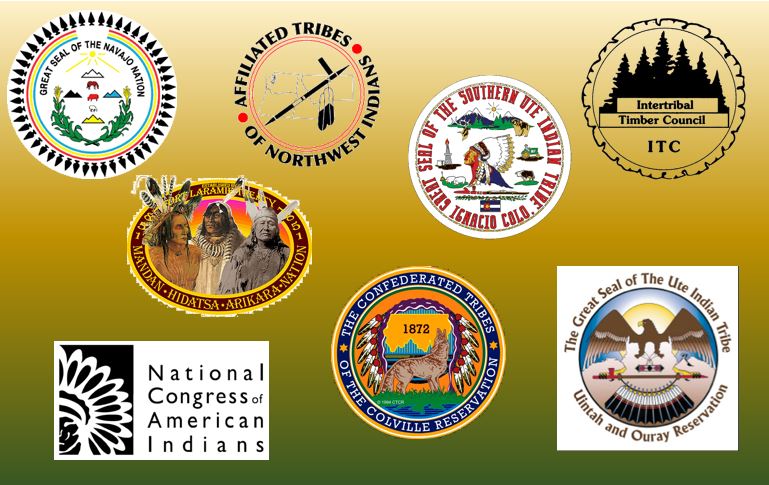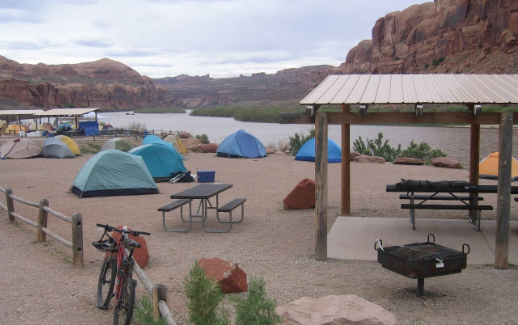In the majority of sue-and-settle cases, environmental groups are awarded litigation costs, including attorneys’ fees, at the taxpayers’ expense. “Recent investigations . . . show that more than $49 million was quietly funneled to environmental groups through these scams.
EXAMINING ‘SUE AND SETTLE’ AGREEMENTS: PART I
PURPOSE:
- To examine how environmental advocacy groups and federal agencies regulate through consent decrees using citizen lawsuit provisions in environmental laws.
- To discuss these lawsuits’ impact on businesses and landowners, as well as potential long-term solutions.
BACKGROUND:
- The Administrative Procedure Act (APA) ensures notice, comment, transparency, and stakeholder involvement in the development of new environmental regulations.
- In the “sue and settle” process, federal agencies and environmental advocacy groups enter into legally binding settlements that create and prioritize agency obligations, bypassing the intent of APA.
- Settlement negotiations are not only confidential and non-adversarial, but groups suing can also recover large attorney fees financed by taxpayers.
Excerpts from the hearing:
Testimony of Darcy Helmick, Idaho Rancher and Land Manager for Simplot Land & Livestock, On behalf of the Public Lands Council
In my extensive experience dealing with the federal grazing system and western land use in general – offensive litigation tactics by outside activist groups have served to totally derail business operations. In the relatively short amount of time I have worked for Simplot, I have been exposed to multiple legal cases, sometimes being directly impacted and filing as interveners, and in other cases just in review. The legal process is a crucially important part of owning a federal lands grazing permit. While it is critical that we maintain the right of citizens to litigate when necessary, reform is needed to prevent that right from being abused or exploited. Federal agencies must be able to perform job activities that maintain protection of multiple use and ensure the intent of Congress during and in the wake of offensive litigation. It is also critical that permitted public lands users have a role in any settlement agreements, and that federal employees at a local level have input. Unreasonable timelines have become the norm and, once imposed during settlements, are rarely reached. The repercussions of those missed timelines heavily impact the permitted public lands users and result in a level of uncertainty that is prohibitive in any business environment. Unfortunately this is often the goal of these litigants. Below are two specific examples where missed timelines have impacted our ranching operations.
In May of 2015 special interest groups filed a complaint seeking injunctive relief against the U.S. Forest Service and U.S Fish & Wildlife Service over certain grazing allotments within the Fremont-Winema National Forest claiming impacts of continued livestock grazing on bull trout critical habitat was arbitrary, capricious and otherwise not in accordance with the ESA, in violation of the Administrative Procedure Act. The claim included multiple Simplot Allotments.
The Forest and FWS had previously issued a Biological Assessment (BA) and Letter of Concurrence (LOC) for grazing within the allotments in 2007 and again in 2010 when critical habitat was defined. The Forest Service noted in their Motion for Summary Judgement, dated February 26, 2016 that they were in the process of reinitiating informal consultation.
While the permittees intervened, and with the Forest Service was successful in the legal case, time that should have been spent completing new consultation was used to prepare for litigation. The result was consultation not being completed in adequate time to turn cattle out as permitted and billed in the spring of 2017.
[wp_ad_camp_1]
The Forest Service recognized in its Motion for Summary Judgement that one of the goals of the National Forest grazing permit program is to provide stability to local ranch operations. The controlling Fremont Forest Plan states that grazing “will remain an important use” of the Forest. The Plan goes on to state grazing “contributes to the economic viability and stability of local communities in the Summer Lake basin” and that “Many local ranch operations could not stay in business without the seasonal spring-summer-fall range provided on the Forest.”
While the litigation was not directly tied to the FS and FWS not completing consultation prior to the 2017 turn out, the time obligated to the litigation certainly impacted the federal agencies ability to perform their jobs at a direct impact to our operations, which is inconsistent with the above mentioned Forest Plan.
The chilling effects of these “sue and settle” tactics are felt throughout our communities. Not only is litigation expensive, the costs to the communities go beyond legal costs. When litigation directly or indirectly forces the removal or reduction of cattle, families are forced to make decisions that impact their bottom line, and the potential ability to continue operations. Scrambling to relocate cattle onto alternative leased pastures (often at a much higher rate) not only impacts the business’s ability to prosper, it also has impacts to cattle health and well-being. A majority of the west is owned by “the public.” Businesses and ranches have developed in the area depending on the use of public lands. As the ability to utilize those lands diminishes the value of business operations and the rural economies they support also suffers.
These tactics also serve to limit young producers from entering the industry, which will inevitably lead to further erosion of the footprint of ranching in the West. As a fourth generation cattle producer it is in my blood to continue with my family business. As my parents age and need more help, my brother and I are working with financial advisors on how to transition the business. My experience dealing with litigation and public lands grazing gives me pause when considering the options. Not only do they impact the financial side of the considerations –how does one budget for litigation, how does one calculate the expense of the stress and time used to work through litigation – how does one put a value on an AUM when it is not certain anymore if that AUM will even be available tomorrow? These questions make an already difficult process overwhelming to even begin working on.
It is critical that we as Americans maintain the ability to sue our government agencies when warranted. It is also critical that impacted stakeholders have a seat at the table when other parties litigate to insure our investments are protected, and we have some kind of certainty moving forward. But above all, we must ensure the integrity of the entire system by preventing abuse and manipulation by motivated activist groups.
Testimony of Kent Holsinger Manager, Holsinger Law, LLC
Burdensome Petitions
Between 2005 and 2015, U.S. Fish & Wildlife Service received 1701 petitions to list a staggering 1,446 species under the Endangered Species Act (“ESA”) according to a 2017 Government Accountability Office report, “Environmental Litigation: Information on Endangered Species Act Deadline Suits” (“GAO Report”)1 at 11.
Over the past several years, a small cadre of environmental groups has buried the U.S. Fish and Wildlife Service (“FWS”) with listing petitions under the ESA. WildEarth Guardians (“WEG”), the Center for Biological Diversity (“CBD”) and their like have a long history of filing both numerous and onerous listing petitions with FWS. For example, in 2007 WEG submitted a single petition seeking to list 475 Southwestern species, while another petition submitted the same year sought to list 206 species in the Mountain-Prairie Region (collectively “2007 WEG Petitions”). A 2013 petition sought to list 81 marine species. In a single 2010 petition, CBD petitioned to list 404 species.
These “mega-petitions” (so termed in the GAO Report) serve only to increase FWS’s workload—and by extension, the time needed to review and subsequently make determinations on petitions. FWS has already struggled to carry out Section 4 directives “in part because of a high volume of litigation and petitions seeking to add a large number of species to the threatened and endangered species lists.” Environmental activist groups see this ensuing delay—brought about in part because of the unreasonably extensive petitions they themselves have submitted—as an opportunity to litigate. For example, in 2009 WEG sued FWS for allegedly failing to make 90-day findings on its own mega-petitions (674 species). It is not surprising that, when FWS must review and make determinations on such a large number of species at one time—in addition any other petitions submitted to the agency—delays and missed deadlines will occur.
Sue & Settle Litigation
Federal lawsuits filed by environmental groups surged in recent years. In fact, sue-and-settle agreements almost quintupled during President Obama’s administration when compared to the number of occurrences during previous administrations.2 Center for Biological Diversity and WildEarth Guardians alone filed 117 and 55 lawsuits respectively between 2009 to 2012.3 Collectively, these two groups filed roughly 1,500 lawsuits since 1990.
Sue-and-settle litigation is staggeringly expensive. In a June 19, 2012 press release, the U.S. House Committee on Natural Resources reported that the federal government “defended more than 570 . . . [ESA-related] lawsuits,” which cost taxpayers “more than $15 million in attorney fees” between 2008 and 2012.4 Unfortunately, the true cost of sue-and-settle is impossible to ascertain as neither the agencies nor the Department of Justice seem to keep track.
In 2013, the U.S. Chamber of Commerce published an analysis of the Sue-and-Settle Process, as well as its effects on government policy (“COC Report”).5 The COC Report found that between 2009 and 2012, a total of 71 lawsuits (including one notice of intent to sue) were settled under circumstances such as sue-and-settle. COC Report at 12. These lawsuits pertained to the Clean Air Act, the Clean Water Act, and the ESA. The Report further notes that “settlement of these cases directly resulted in more than 100 new federal rules, many of which are major rules with estimated compliance costs of more than $100 million annually.”
By filing such suits, these groups circumvent the normal rulemaking process and effect immediate regulatory action with the consent of the agencies.
In the majority of sue-and-settle cases, environmental groups are awarded litigation costs, including attorneys’ fees, at the taxpayers’ expense. “Recent investigations . . . show that more than $49 million was quietly funneled to environmental groups through these scams [sue-and-settle litigation] since President Obama assumed office.” 6 “According to a 2011 GAO Report, three organizations were awarded with 41% of this entire sue-and-settle payback between 1995 and 2010….”7 Legislation has been repeatedly introduced (but never enacted) that would curb sue-and-settle.
According to the Chamber, “a review of a portion of their database revealed attorney’s fees were awarded in at least 65% (49 of 71) of the cases. These fees are not paid by the agency itself, but are paid from the federal Judgment Fund. In effect, advocacy groups are incentivized by federal funding to bring sue and settle lawsuits and exert direct influence over agency agendas.” COC Report at Footnote 14.
In addition to the attorney fees, environmental groups like WEG and CBD often receive extensive funding from the federal government. WEG’s 2016 income totaled at $3,789,258, of which $800,104 was from government grants. This is an increase of $315, 368 from the organization’s 2015 government grant income of $523,038.8 NRDC received at least $6.5 million in grants from the EPA since 2000.
Examples of WEG and CBD Litigation
Since the inauguration of President Trump, CBD, WEG, and other environmental activist groups have ramped up their litigious efforts.
CBD has filed or co-filed approximately 16 lawsuits9 against the federal government since mid-March 2017 alone. Many of these lawsuits have challenged executive orders or memoranda issued by President Trump in addition to Congressional Review Act (“CRA”) bills signed by the president.
5/11/2017 – CBD et al v. USDA. Suit against APHIS Wildlife Services regarding
predator control in Idaho.
5/3/2017 – CBD, NRDC, Sierra Club, et al v. President Trump, DOI Secretary Ryan Zinke, and Wilbur Ross. Suit over the executive order lifting a ban on new offshore oil and gas drilling in the Arctic and Atlantic Oceans.
5/3/2017 – CBD v. EPA. Suit claiming that the agency failed to comply with a FOIA request for documents relating to Administrator Scott Pruitt’s “close ties” to oil companies and “other polluting industries.”
5/3/2017 – CBD et al v. Scott Pruitt. Suit regarding his “failure to finalize deadlines by which D.C. and Philadelphia must meet 2008 clear-air standards” re controlling smog.
5/2/2017 – CBD et al v. USFS and BLM. Suit regarding oil and gas in Ohio’s Wayne National Forest.
4/20/2017 – CBD v. Zinke. Suit challenging the constitutionality of the Congressional Review Act to overturn an Obama administration rule prohibiting predator control efforts.
5/18/2017 – CBD v. U.S. Department of State. Suit demanding information on the route of the Keystone KL Pipeline, as well as contracts and correspondence with private consultants involved.
Other lawsuits filed by CBD (and its allies) during this same period challenged: the approval of the Keystone XL Pipeline; coal leasing on public lands; a land exchange for a copper mine in Minnesota; efforts to secure the nation’s border; and Colorado’s predator control program.
Equal Access to Justice Act
The Equal Access to Justice Act (“EAJA”) is another favored tool for environmental litigants. While it was intended to protect individual citizens and businesses from the long arm of government regulation, environmental groups have co-opted it to recover exorbitant legal fees.
The first major problem with the EAJA is transparency. Although it originally required a public report of amounts paid out, Congress repealed that requirement in 1995. As a result, large environmental groups make sizable profits suing federal agencies with no public disclosure regarding the cost to taxpayers. Net-worth caps (that serve to limit recovery) do not apply to 501(c)(3)s—allowing wealthy environmental groups to game the system. Moreover, environmental attorneys have been able to bypass the $125/hour statutory cap on attorneys’ rates. Finally, the courts have interpreted the term “prevailing party” with great leniency. In Natural Resources Defense Council v. Salazar, No. 1:05- cv-01207-OWW-GSA (E.D. Cal. 2011), the plaintiffs kept the agency in court for more than six years and won only a single order relative to a biological opinion. Nonetheless, NRDC received a $1,906,500 payout.
Sue & Settle Litigation Stifles Conservation
Sue-and-settle litigation benefits only litigious environmental groups. It burdens local, state and federal governments and inhibits real, on-the-ground conservation work. When just a single listing could have dramatic impacts to agriculture, water, utilities, industry and others—the effects of listing hundreds of new species would be devastating.
For listed species, activities that require federal permits, licenses or authorizations require consultation with the FWS under Section 7 of the ESA. This can result in significant delays and costly project modifications. For example, surveys may be required for some listed species that are not present for significant months out of the year. And existing federal permits, licenses or authorizations could be subject to reinitiation of consultation upon new listings or information. Finally, some actions on public or private lands could be construed to “take” listed species or their habitat under Section 9 of the ESA. Violations of the ESA are subject to substantial civil and criminal penalties.
Incredibly, agencies like the BLM are requiring permitting and red-tape even for projects that improve or enhance habitat. National Environmental Policy Act (NEPA) compliance, along with the ESA, is stifling true conservation work.
Video excerpts of above testimonies



